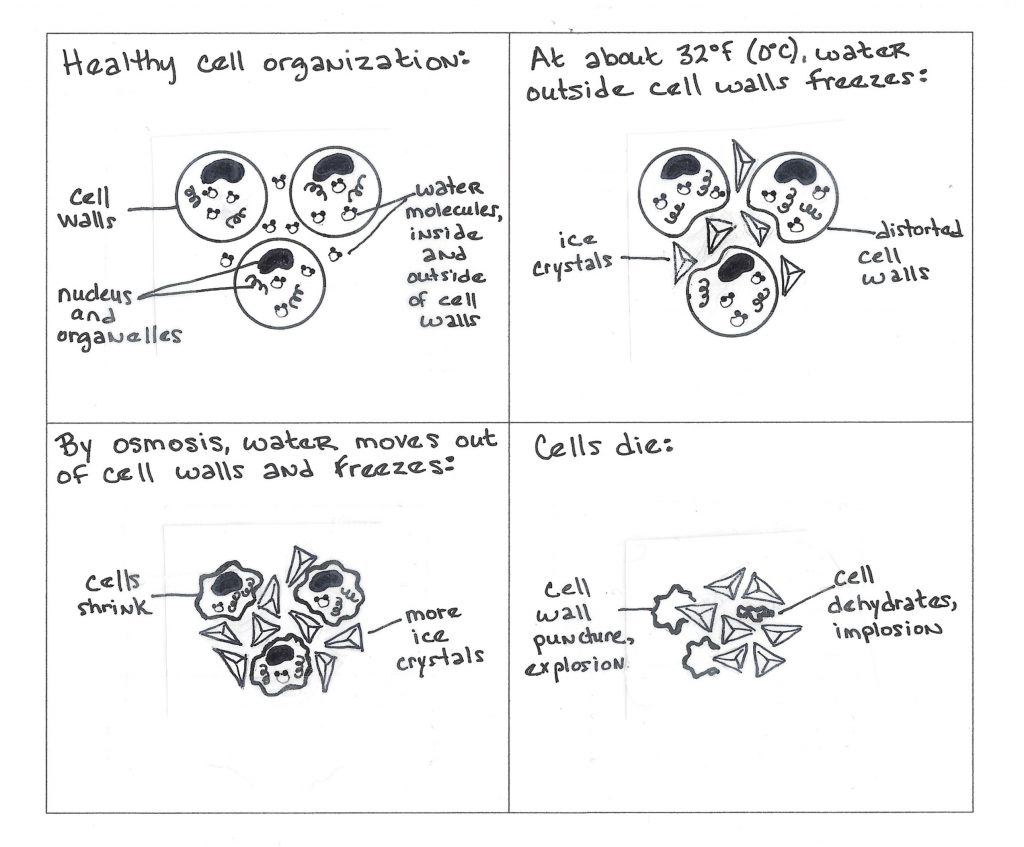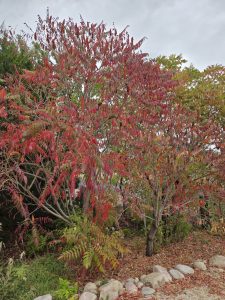Whether we like it or not, the seasons are changing again and cold winter nights will soon be here. (BE SURE THIS SENTENCE IS APPROPRATE FOR THE WEATHER.) That means we’ll be seeing frost and freeze damage on our plants. Here’s what happens under the microscope when there is a frost or freeze.
In normal conditions, the plant tissues – the cells and the space between the cells – are surrounded by water. Water moves via osmosis through the cell membrane to equal out the water on both sides of the cell. Inside the cell membrane, however, the liquid also contains some salt (phosphorus) and soluble sugars.
When the air temperature reaches 32 degrees (0*C), ice begins to form. The salts and sugars that are inside the cell lower the freezing temperature of the water inside the cell by just a few degrees. Therefore, the water outside the cell membrane freezes first, which causes the cell walls to bend and deform around the ice crystals. The real problem is the continuing osmosis. The water inside the cells moves out of the cell wall, dehydrating the cell and causing it to shrink. As this happens, we can see the plant wilting. When the water moves outside of the cell wall, it leaves behind the salt and sugar, so it freezes.
At this point, either all of the water has exited the cell membrane and the cell implodes OR the dehydrated, deformed cell wall is punctured by sharp ice crystals and the cell explodes. Either way, the plant dies at the cellular level.

Plants have several adaptations to help them handle cold temperatures. Some are better at it than others which is the basis of the USDA hardiness ratings. Deciduous trees and herbaceous perennials drop their leaves, and hold their DNA in dormant state until it is warm again. Some plants increase the salts and sugars inside the cells which protects them from dehydration at freezing. Some plants increase the waxy layer around the leaves, decreasing the amount of water between the cells.
The gradual decrease in daytime temperatures helps the plant to acclimate or “harden off” for winter, signaling some of these adaptations. A surprise, early freeze, can be devastating. For our annual flowers and vegetables, the freeze is the end of the life cycle. For perennial plants, trees and shrubs, it is the beginning of the dormancy period.
For some ideas to protect your plants from frost for just a little bit longer before winter hits, check this previous blog post:
Be Prepared for a Spring Cold Snap
If you need a few reminders of yard work tasks before winter, see this one: Frost/Freeze this week



